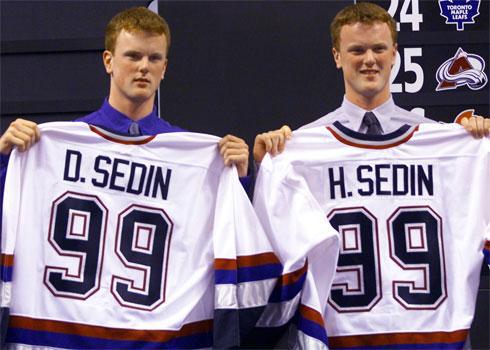

The 1999 NHL Entry Draft is remembered not only for the talent it unearthed but also for the unique circumstances surrounding the selection of identical twins, Daniel and Henrik Sedin. The Sedin twins' journey to the Vancouver Canucks is a story of astute scouting, bold management, and the unwavering bond between two brothers who would redefine the meaning of on-ice chemistry.
Going into the draft, held on June 26, 1999, at the FleetCenter in Boston, the Sedins were highly touted prospects. According to reports from the time, the 1999 draft was considered one of the deepest in talent in years, headed by Patrik Stefan and the Sedin twins. However, the challenge lay in securing both players, as they had made it clear that they wanted to play together. This presented a conundrum for NHL general managers.
The Vancouver Canucks, under the guidance of General Manager Brian Burke, held the third overall pick. Burke recognized the extraordinary value of having both Sedins and orchestrated a series of trades to make it a reality. He first acquired the fourth overall pick from the Chicago Blackhawks, sending Bryan McCabe and a future first-round pick in the 2000 NHL Entry Draft in exchange. Burke then shipped that 4th overall pick and two third round picks to the Tampa Bay Lightning for the 1st overall pick. His final move was sending that 1st overall pick to the Atlanta Thrashers, who had other draft plans besides the Sedins. In doing so, Burke secured the 2nd and 3rd picks overall in the 1999 draft.
The Atlanta Thrashers, an expansion team, held the first overall pick after winning the draft lottery, but they had agreed not to draft either of the Sedin twins. With the first pick, the Thrashers selected Patrik Stefan. The Canucks then used the second and third picks to select Daniel and Henrik Sedin, respectively. This masterful maneuvering by Burke ensured that the twins would begin their NHL careers together in Vancouver.
The Sedins' early years in the NHL were marked by a period of adjustment. They faced the challenges of adapting to the league's physicality, the smaller ice surfaces, and a different style of play. Despite glimpses of brilliance, consistency was elusive. However, with the support of fellow Swede Markus Naslund, who mentored them both on and off the ice, they persevered and refined their game.
As they matured, the Sedins developed a unique and almost telepathic connection on the ice. Their cycling game, pinpoint passing, and uncanny ability to anticipate each other's movements became their hallmark, earning the moniker "Sedinery." Henrik, the playmaker, and Daniel, the finisher, formed a dynamic duo that terrorized opposing defenses.
The Sedins' impact on the Canucks and the city of Vancouver extended far beyond their on-ice achievements. Henrik served as the team's captain, while Daniel was an alternate, and together they led the Canucks to the 2011 Stanley Cup Final. They also won multiple Presidents' Trophies. Off the ice, they were known for their humility, generosity, and commitment to the community.
Daniel recorded 393 goals and 648 assists in 1,306 games played in the NHL. Henrik played 1,330 games in NHL, scoring 240 goals and adding 830 assists. Both achieved the 1,000-game milestone, as well as the outstanding 1,000-point achievement. They are also the only pair of brothers in NHL history to each score 1,000 career points. Together, the twins combined for 2,111 points in 2,636 games.
Following their retirement in 2018, the Sedins transitioned into player development roles within the Canucks organization. In 2022, their careers were immortalized with their induction into the Hockey Hall of Fame.